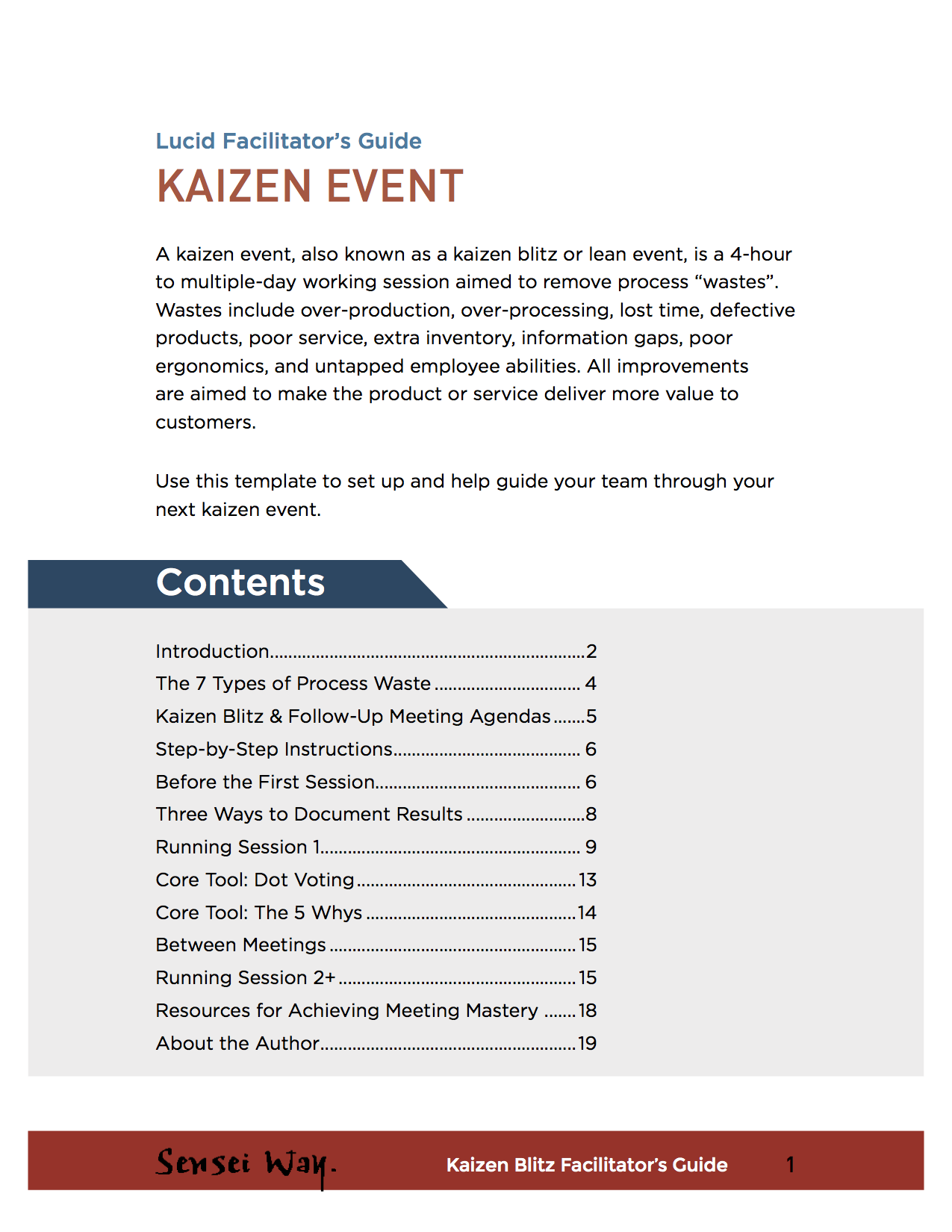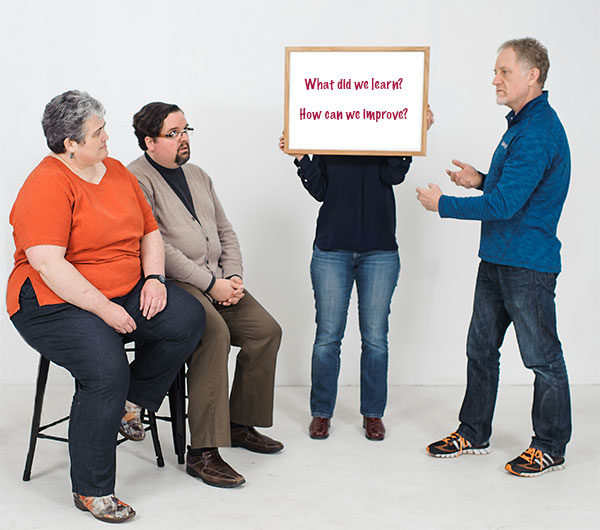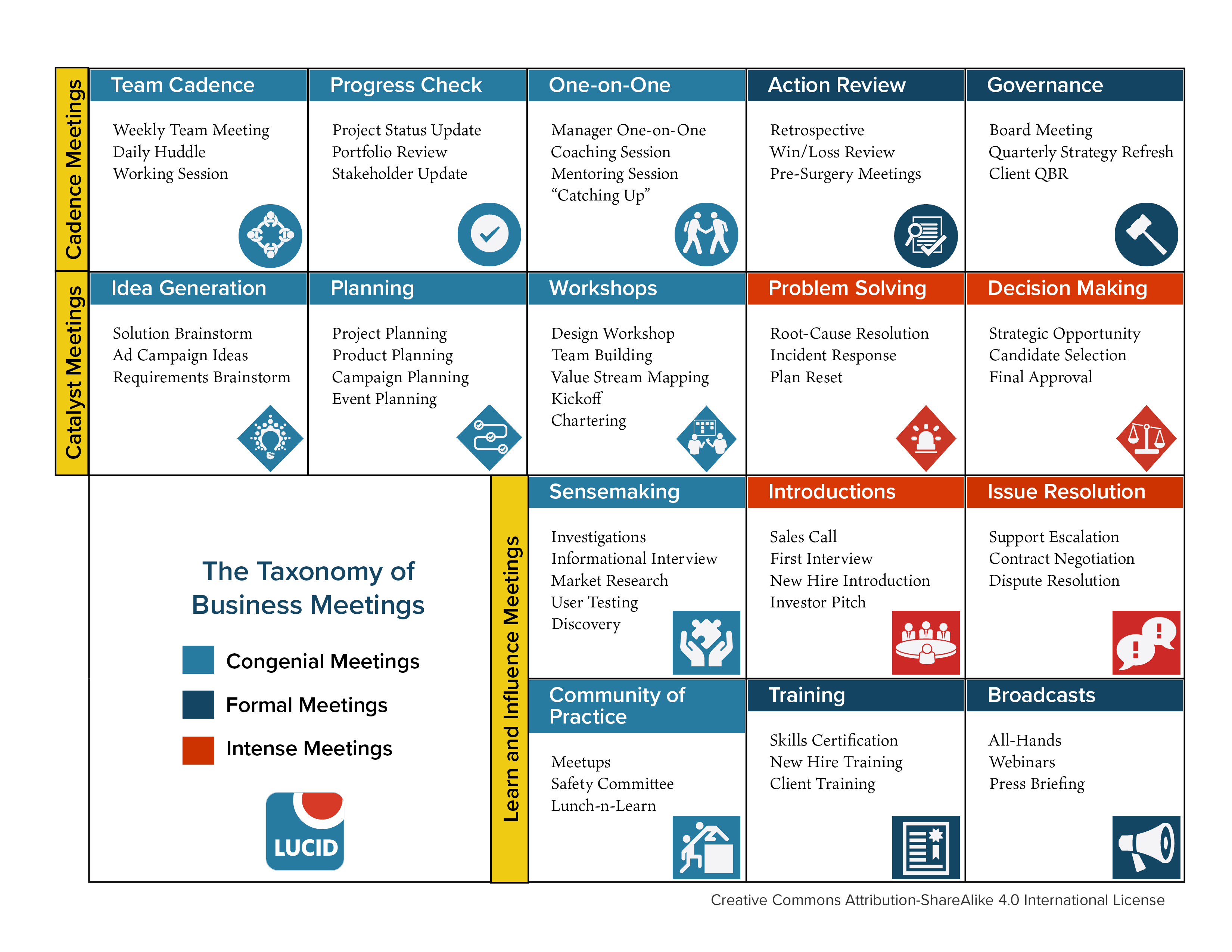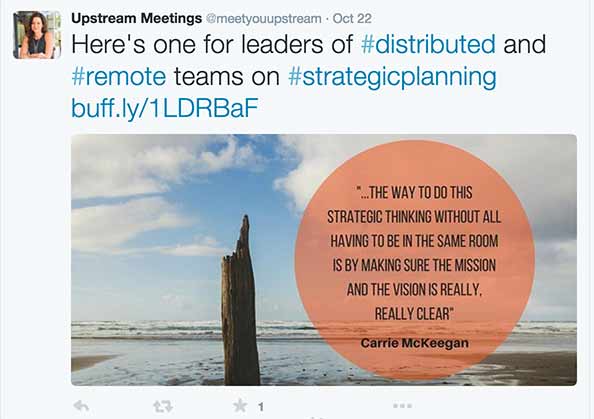How to Run Kaizen Events to Improve Your Business Processes

Introducing Dan Prock
The Lucid Meetings team is delighted to welcome our newest template designer, Dan Prock. We met Dan through Ingrid Bens, and quickly realized he had specialized expertise that we were missing. Dan Prock helps businesses of all sizes implement lean practices that help eliminate process wastes and improve operations. Read on to learn about lean, kaizen, and how these practices that started in manufacturing are now revolutionizing the services and small business worlds.
— Team Lucid
Massaki Imai, the author of Kaizen, once said:
“The starting point for improvement is to recognize the need. This comes from recognition of a problem. If no problem is recognized, there is no recognition of the need for improvement. Complacency is the archenemy of kaizen.”
Recognizing and Eliminating Problems
In typical organizations, business managers, experts and engineers work to solve problems. “Problems” are typically defined as an issue with a mission-critical system, broken or poor performing machines, buggy software, poor performers, or defects in quality.
Several decades ago, Japanese manufacturers led by Toyota found a way to become competitive on relatively low sales volumes. They did it by turning their attention from just solving the obvious problems towards improving processes overall. The leaders at Toyota learned to harness the intelligence of their people to identify and eliminate “process wastes” – such as delays, rejects, unnecessary motion, over-processing, and extra inventory, for example – using techniques that have since come to be known as “kaizen” and “lean manufacturing”.
Led by master teachers known as the “sensei” and managed by all company leaders, the practice of lean and kaizen enabled Toyota to remain competitive through recessions and quality recalls, and to grow into the world’s largest car company.
The Kaizen Event (aka the “Blitz”)
A kaizen event, also known as a kaizen blitz or lean event, is a 4-hour to multiple-day working session aimed to remove process “wastes”. Wastes include over-production, over-processing, lost time, defective products, poor service, extra inventory, information gaps, poor ergonomics, and untapped employee abilities. All improvements are aimed to make the product or service deliver more value to customers.
Kaizen events are an adaptation of the work of American quality expert W. Edwards Deming. His process to eliminate waste was based on never-ending cycles of plan-do-check-act, or P-D-C-A, known as the Deming Cycle.
In a kaizen event, a team is formed, oriented and then observes and prioritizes waste in the targeted work flow or customer-facing service center. Led by the facilitator or manager, the team prioritizes the top few wastes, then discusses and tries solutions or counter-measures for each one. The deliverables from a kaizen event’s effects on a process are: improved delivery, lower cost, higher quality to customers, and making the work safer and easier for employees to do.
Guiding Principles
A successful kaizen event operates based on these basic principles:
- What the work is counts. Understand it in detail.
- Identify the waste.
- What the customer wants counts. Understand customer requirements in detail.
- Define a future state – what does a successful operation look like?
- Empower and collaborate with the work team to find ways to take waste out and do experiments to try kaizen ideas.
- If you have faith in the “kaizen” process, you’ll redesign a workflow for a product, service or distribution operation, changing it for the better.
What Kaizen Means for Service Professionals and Small Businesses
In industries worldwide, kaizen events and lean thinking began in factories and have now improved the operations of service and knowledge work companies – in banking, health care, product design, software coding, accounting, and even job shops and warehouses.
While the tasks in these service or transactional jobs are often more variable and time consuming than factory work, the principles of kaizen and lean thinking apply – in fact kaizen events have even greater potential value because there’s a lot more waste that’s invisible that can be found and eliminated!
Those who practice kaizen find that big results come from many small changes accumulated over time.
Results in a Corporate Law Office
A corporate legal department was aiming for a dramatic reduction in patent-filing lead time, since patents were taking up to 200 days to file. One patent filing team ran a kaizen event and was chosen to do a three month trial on the new patent-filing process. All the goals of the process redesign had been achieved. During the patent experiment, the total lead-time had declined from 222 to 173 days overall.
Kaizen and Lean in Health Care
In striving to improve the effectiveness of health care, many hospital administrators are now doing kaizen events and applying lean thinking to their practices. One kaizen event facilitator described a successful kaizen event in the hospital where they worked.
“At the end of the week, the team shared the work done during the week and showed a summary of the changes out on the unit in the hospital, including new metrics, standard work, and indicators of progress on the trials, all in order to be transparent and get conversations going.”
Kaizen and lean have had an amazing impact in health care facilities. In his book about their kaizen journey, Charles Kenney shared these results.
Since adapting the principles of the Toyota Production System to health care in 2002, Virginia Mason Health System has made enormous leaps forward in quality, safety, patient experience of care, and affordability. It has achieved world-class levels of patient satisfaction and has been honored as one of the safest hospitals in the country.
Kaizen Event for a Restaurant
In another kaizen event, an already successful restaurant engaged its employees to redesign the work with kaizen and involve the staff.
On the first day, the team redesigned the layout of tables to make more customer space, moved the station for water, utensils and condiments, and marked new aisles to shorten the walking distance for servers coming from the kitchen. They began in the front service area, and soon other parts of the restaurant were involved too. Here are the comments of the restaurant founder and owner on doing kaizen events with her employees.
“In my experience, the value of the kaizen event was threefold. First, it enabled me as the founder of the company to be able to include my staff in a competitive and strategic planning process, instead of management informing and making all the decisions. The opportunity to include my staff lead to the second benefit of it being a team building tool as well was an improvement for the company.
Having staff work together to make a change for the business resulted in my company not only making our restaurant more efficient for the customer but for staff as well. Using this approach, staff embraced the change, where before they may have fought a change that came down from management. Working from the “inside-out” enabled true continuous improvement.
The third way it affected the business was that the process started out in the front and was soon contagious in the kitchen. The kitchen staff quickly found ways to improve in their own areas, making ordering more efficient and cutting costs in overall purchasing.”
How to Run a Kaizen Event in Your Business
Getting Ready
Pre-work for a kaizen event starts with defining the purpose, scope and deliverables for the event with the project sponsor. The sponsor is the company owner, manager, or leader who has the power to break barriers and put the proven kaizen ideas into practice.
Once the sponsor has defined the direction, the person leading the meeting finalizes the agenda and prepares to facilitate the “waste walk” and kaizen identification process.
THE 7 TYPES OF PROCESS WASTE
The kaizen event is all about eliminating “waste” in a process. But what does that mean?
1. Rework
Work that needs to be done again due to defects or mistakes made the first time.
2. Over-Production
Making too much of something, or making it too early.
3. Over-processing
Doing the same thing more than once, or doing more than needed to deliver value to the customer.
4. Inventory
Storing products or materials that aren’t needed in the near future.
5. Transportation
Moving people or objects farther or more often than needed.
6. Waiting
Any time when a person or object sits idle, waiting for the next step in the process to begin.
7. Motion
Ergonomic issues such as repetitive physical motion, mental fatigue from staring at small type on a screen, lifting too much weight, etc.
There are two sessions in the kaizen event process.
Running Session 1
The first session starts by explaining the project goals, then describing the kaizen process. After the introductions, the team breaks into groups and observes the existing process. Together, they record any perceived wastes they find.
Once all the observations are complete, the participants regroup to discuss what they found and identify experiments they can put in place to eliminate wasteful steps in the process.
With the sponsors support, the team leaves the first session with action plans for testing various improvements to the process.
Here’s the agenda outline for Session 1.
- Meeting Opening
- Waste Walk
- Discuss and Group Waste
- Prioritize Opportunities
- Brainstorm Solutions
- Plan Kaizen Experiment
- Review and Closing
Running Session 2
After the team runs the experiments identified in the first session, they regroup to review the results.
Successful experiments get adopted into the official process, and shared out to everyone impacted by the change.
Here’s an agenda outline for Session 2.
- Meeting Opening
- Review and Approve New Process
- Plan Kaizen Experiment #2+
- Review and Closing
Get Step-by-Step Directions in the Kaizen Event Facilitator’s Guide!
Kaizen and lean events have been a fixture in manufacturing for decades, and now kaizen events and lean thinking are powerful ways for medium sized businesses and small shops to improve their operations too.
For those of you looking to get started with lean, or those who could use a refresher on the specifics of leading a kaizen event, I’ve designed a template and facilitators guide that walks you step-by-step through the process. This is a great time to engage your people in a kaizen event, and by adding good facilitation to the Lucid template, you’ll find it works wonders!




